According provided by lens Nikon N AF-S Micro Nikkor 105mm 1: 2.8G ED VR SWM IF Micro 1: 1 Nano Crystal Coat huge thanks to the reader of Radozhiva - Violetta Kompaniets.
Browse Navigation:
- In short
- History
- Main Specifications
- Enlightenment 'N' (Nano Crystal Coat)
- Assembly
- Aperture Features
- Stabilizer
- Focusing
- Image quality
- Sample Photos
- My personal experience with the lens
- Prices
- Results
- User Comments
- Add your review or question on the lens
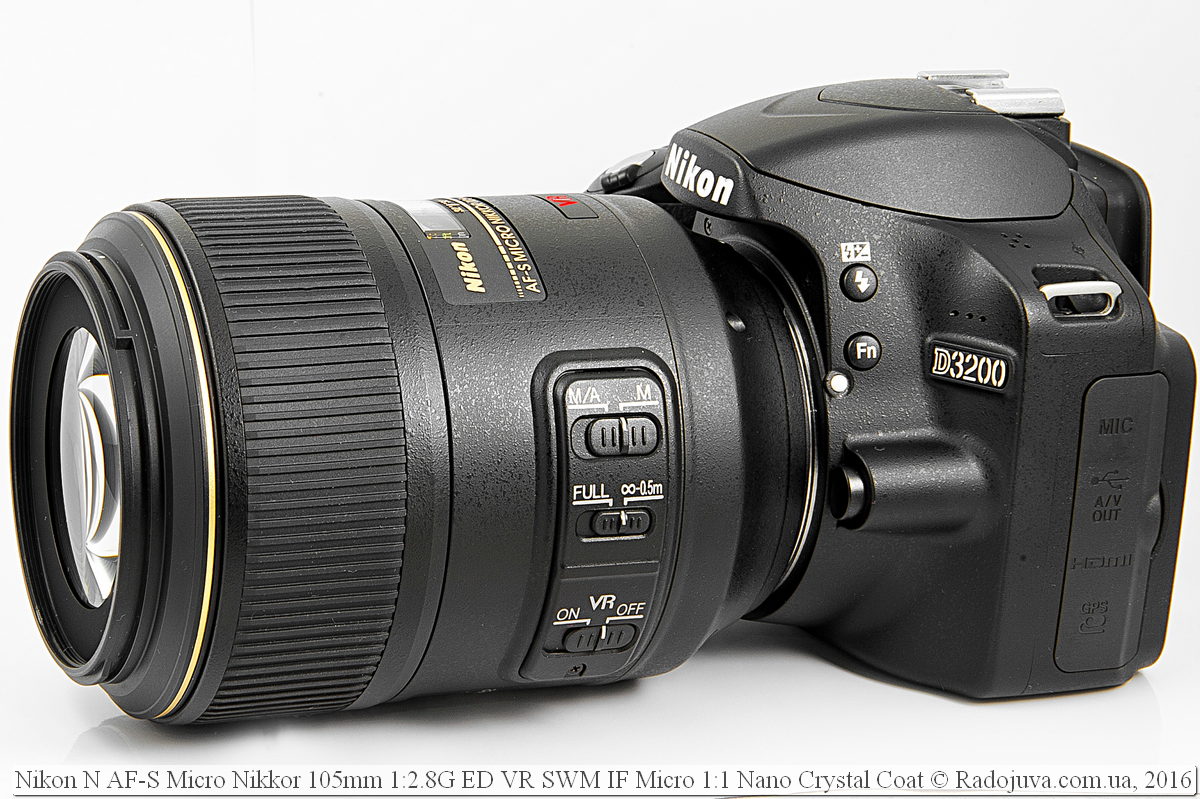
Nikon 105mm f / 2.8 VR Micro on camera Nikon D3200... The lens is so "chubby" that the bottom of the small camera does not reach the ground.
In short
Nikon N AF-S Micro Nikkor 105mm 1: 2.8G ED VR SWM IF Micro 1: 1 Nano Crystal Coat (short name - Nikon 105mm f / 2.8 VR Micro) - excellent lens, one of the best macro lenses in the Nikon Nikkor line. Also, this is one of the best Nikon Nikkor lenses I've ever shot.
Perhaps only the Nikon 200mm 1: 4D ED AF Micro Nikkor may in some cases be better than the Nikon 105mm f / 2.8 VR, but the latter has a number of useful modern technologies.
History
Below I have given evolutionary list of Nikon (Nippon) Nikkor macro lenses... Initially, I included lenses of the 135/4 class, which later evolved (or were replaced) to a shorter focal length of 105 mm. Unfortunately, 135mm macro lenses are no longer available.
- Nippon Kogaku Japan Nikkor-Q 1: 4 f = 13.5cm, a rangefinder lens that with the help of the NIPPON KOGAKU F BR1 can turn it into a macro lens for cameras with Nikon F mount. It has been produced since 1959. It is a very rare collection lens, considered the first Nikkor lens with a focal length of about 100 mm, which was used for macro -shooting.
- Nippon Kogaku Japan Nikkor-Q 1: 4 f = 135mm, updated previous version with a different spelling of the name.
- Nippon Kogaku Japan Nikkor-P 1: 4 f = 105mm, the first macro lens with a focal length of 105 mm. Developed in 1969, produced from 1970 to 1974. Actually, this lens is not a “lens” in the usual sense. It does not have a focusing mechanism and focusing distance scale. To work with the lens, it is imperative to use macro fur. Very few of these lenses have been produced.
- Nikon Micro-Nikkor 105mm 1: 4, the so-called K version (not AI, but with a new body design), the first “real” Nikon Nikkor macro lens with a similar focal length. To achieve 1: 1 magnification, an optional Nikon PN-1 Extension Ring had to be used. Produced from May 1975 to 1977.
- Nikon Micro-Nikkor 105mm 1: 4, AI version. Produced from 1977 to 1981, optically the same as the 'K' version. Maximum magnification ratio without macro rings - 1: 2.
- Nikon Micro-Nikkor 105mm 1: 4, AI-S version. Produced from September 1981 to March 1983, optically the same as the 'AI' version. Maximum magnification ratio without macro rings - 1: 2.
- Nikon UV-Nikkor 105mm 1: 4.5, AI-S version. The optics are made of special quartz glass. A unique lens that does not have a difference in focus position for the ordinary and ultraviolet (UV) spectrum. Produced since April 1985, the time for the termination of production is unknown. Maximum magnification without macro rings - 1: 2.
- Nikon Medical-Nikkor 120mm (M = 1/11) 1: 4, a rare macro lens intended for use in medicine. It was produced from 1981 to 1998.
- Nikon Micro-Nikkor 105mm 1: 2.8, AI-S version. It was produced since March 1983, the end time of production is unknown. The first Nikkor 105 / 2.8 class macro lens. Maximum magnification without macro rings - 1: 2.
- Nikon AF Micro Nikkor 105mm 1: 2.8, the first autofocus version of such lenses, introduced in June 1990 and produced until 1993, was later developed to a 'D' version. This is the first Micro Nikkor lens that can focus at 1: 1 magnification without the need for additional accessories.
- Nikon AF Micro Nikkor 105mm 1: 2.8D (MKII), the second autofocus version, the optical design is exactly the same as the previous version. Added the ability to transmit the focus distance to the camera. You can see an overview of this lens. here.
- Nikon N AF-S Micro Nikkor 105mm 1: 2.8G ED VR SWM IF Micro 1: 1 Nano Crystal Coat, the version shown in this review. The lens is not at all like previous versions. It was introduced in February 2006. There are 3 sub-versions: 'Made in Japan' (2006-2009), 'Made in China' (2010->) and 'Made in China, for USA' (2010->).
As you can see, the hero of my review, Nikon 105mm f / 2.8 VR Micro, has a large family tree. Nikon 105mm f / 2.8 VR is fundamentally different from all previous lenses, which can be seen even in its long name. Unlike all previous models, Nikon 105mm f / 2.8 VR uses fully internal focusing, optic nanocrystalline antireflection, a built-in ultrasonic focusing motor, a built-in image stabilizer, has no aperture control ring, has an M / A mode (constant access to the focus ring), uses ED elements, can use a bayonet type hood and weighs more than anyone else.
In fact, there are only two Nikon Nikkor autofocus "macro hundreds", they are Nikon 105mm f / 2.8G VR and Nikon 105mm f / 2.8D, and if you choose between them, then almost everything points in favor of the new Nikon 105mm f / 2.8 VR.
Main technical characteristics of Nikon N AF-S Micro Nikkor 105mm 1: 2.8G ED VR SWM IF Micro 1: 1 Nano Crystal Coat:
| Review Instance Name | Nikon N AF-S Micro Nikkor 105mm 1: 2.8G ED VR SWM IF Micro1: 1 Nano Crystal Coat 22225050 |
| Basic properties |
|
| Front Filter Diameter | 62 mm, plastic thread for filters |
| Focal length | 105 mm, EGF for Nikon DX cameras is 157,5 mm |
| Zoom ratio | 1 x (this fix lens, it does not have a zoom). |
| Designed by | for digital cameras Nikon FX |
| Number of aperture blades | 9 rounded petals |
| Tags | a window with a focusing distance in meters and feet, as well as with magnification marks from 1:10 to 1: 1. There is a bayonet mount tag, a mounting and fixing tag for the hood. |
| Diaphragm | from F / 2.8 to F / 32 during focusing to infinity; from F / 4.8 to F / 57 during focusing on MDF. The lens does not have an aperture ring (G - lens type) |
| MDF (minimum focusing distance) | 0.314 m, maximum magnification ratio 1: 1 |
| The weight | 720/790 g. The weight of the lens depends on the year of manufacture. |
| Optical design | 14 elements in 12 groups. The circuit includes 1 low dispersion element (shown in yellow in the optical diagram). The presence of such elements is indicated on the case with the abbreviation 'ED'. Also, some elements have nanocrystalline coating. Unfortunately, the position of these elements / element is not indicated on the optical diagram.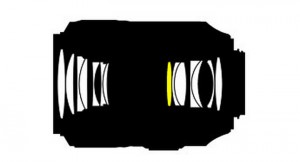 The image of the optical circuit is clickable. The image of the optical circuit is clickable. |
| Lens hood | Nikon HB-38 (included in the package) |
| Transportation | With a soft case CL-1020 (included in the delivery set) |
| Manufacturer country | MADE In China (At the same time, the first lenses were produced in Japan from 2006 to 2009) |
| Period | From February 22, 2006 to the present day (at least until the winter of 2016) |
| Instruction (multilingual) | Download |
| Price |
An interesting macro lens for Nikon DX cameras was introduced in October - Nikon DX AF-S Micro Nikkor 85mm 1: 3.5G ED VR SWM IF Micro1: 1, whose optical design is very similar to the Nikon 105mm f / 2.8 VR, and is most likely a rework. The macro lens for Nikon DX is 20mm shorter, darker (F / 3.5 versus F / 2.8), without 'N'-coating and not included in the list of professional lenses.
Assembly
Nikon 105mm f / 2.8 VR is made very high quality. The lens body is metallic, with a metal bayonet mount, but with a plastic thread for filters. Nikon 105mm f / 2.8 VR belongs to the professional line of Nikon Nikkor lenses and proudly wears a gold ring on its body.
The Nikon 105mm f / 2.8 VR case has a characteristic rough surface, in the hands it feels like a very solid thing.
The bayonet side is rubber compressor, which protects the mount of the bayonet mount (but not the entire lens) from dust and moisture. In more detail the issue of security lenses Nikon Nikkor described here.
Important: From the moment the lens was announced until 2009, Nikon 105mm f / 2.8 VR lenses were manufactured in Japan, but from 2009 to the present day they have been made in China. The Nikon 105mm f / 2.8 VR version from this review, unfortunately, is made in China. Usually, all Nikon Nikkor professional lenses are made in Japan.
Important: Depending on the year of manufacture, the Nikon 105mm f / 2.8 VR sub-versions have different weights. The maximum weight of the lens under-version is 790 grams, the minimum is 720 grams.
The body has a bayonet mount mark and a mark for quick installation and fixing of the hood. The lens uses a Nikon HB-38 plastic hood, which is fixed in special grooves located near the front lens of the lens. The hood can be installed in the opposite direction for transportation. In this position, access to the focusing ring is completely lost (see photo of the lens).
The Nikon 105mm f / 2.8 VR comes with a CL-1020 soft case, and the lens itself comes in a huge cardboard box with a characteristic Nikon paint job.
Stabilizer
The Nikon 105mm f / 2.8 VR Micro is the only Micro-Nikkor FX macro lens (early 2016) to have built-in VR (Vibration Reduction) image stabilization. According to the instructions, the stabilizer can compensate 4 stops by shutter speed. In numerical terms, this means that you can shoot at shutter speeds 16 times longer than what a lens without a stabilizer requires.
The Nikon 105mm f / 2.8 VR Micro stabilization system applies to second generationwith 'VR' written on the lens barrel redcommon to the first Nikkor lenses with Image Stabilizer. Nikon 105mm f / 2.8 VR Micro (February 2006) became the third prime lens with image stabilization among all Nikon Nikkor lenses, the first being Nikon AF-S Nikkor 300mm 1: 2.8G ED VR (September 2004) and Nikon AF-S Nikkor 200mm 1: 2G ED VR (July 2004). I want to note that the Nikon 105mm f / 2.8 VR Micro appeared 3 years earlier than Canon Macro Lens EF 100mm 1: 2.8 L IS USM.
Please note that the instructions for the Nikon 105mm f / 2.8 VR Micro lens indicate 4 stops of compensation (measured by Nikon and only during focusing from infinity to 1:30 magnification), and the official website 3 stops (measurements by CIPA).
To enable / disable the stabilizer on the lens there 'VR ON / OFF' switch. The lens can track the movement of the camera while shooting panoramas. Unlike some other lenses, the Nikon 105mm f / 2.8 VR Micro does not have a stabilizer mode switch.
In practice, the effectiveness of the stabilizer drops dramatically as the focusing distance decreases. When working on an MDF (with a magnification ratio of 1: 1), the work of the stabilizer is felt many times worse than when focusing at infinity. The same drop in the efficiency of the stabilizer is observed with a similar lens in the legion of competitors - Canon Macro Lens EF 100mm 1: 2.8 L IS USM.
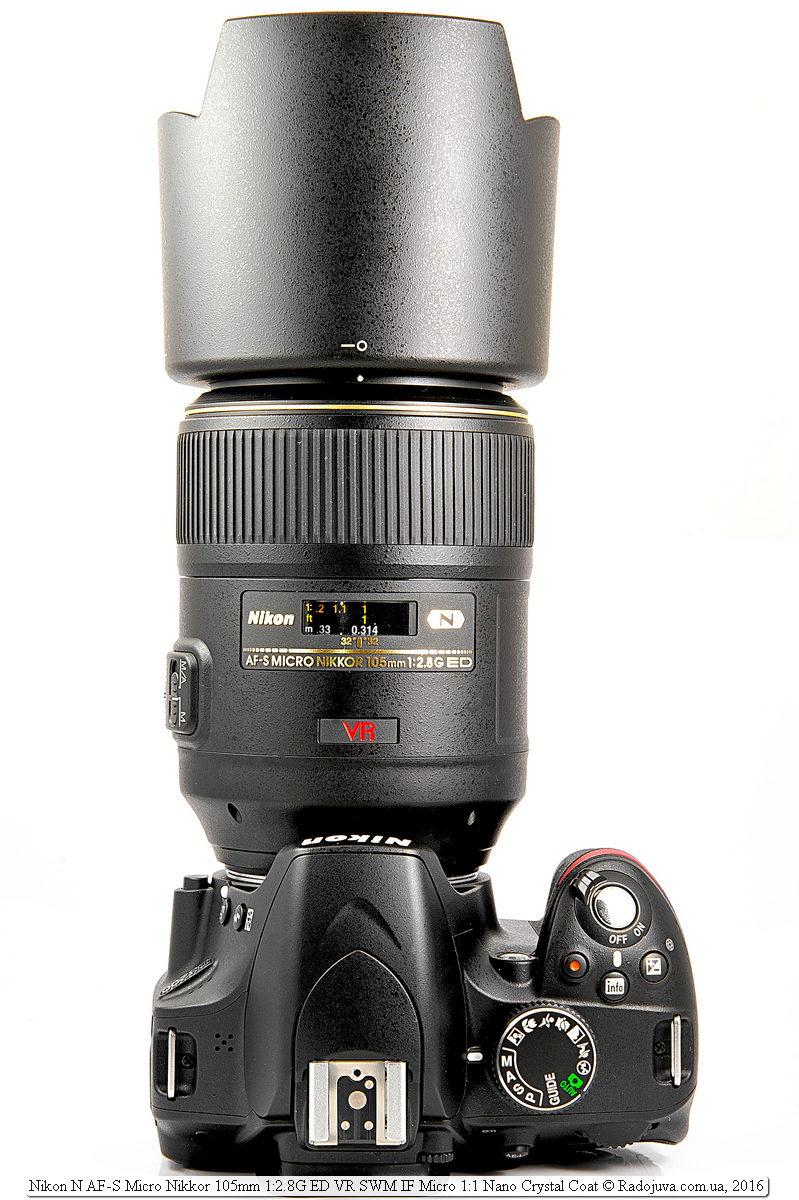
Nikon 105mm f / 2.8 VR Micro on the camera Nikon D3200 with hood installed
Enlightenment 'N' (Nano Crystal Coat)
The Nikon 105mm f / 2.8 VR Micro boasts an 'N' letter on its body. 'N' stands for 'Nano Crystal Coat' - nanocrystalline optical coating. Such enlightenment allows you to cope well with glare and flare, and also creates excellent color reproduction. Most likely only one of the lenses (the latest, which is located on the bayonet side) has an 'N'-enlightenment. The rest of the lenses have a classic SIC enlightenment (Nikon Super Iintegrated Coating - special super integral enlightenment).
It is unfortunate that Nikon does not indicate the number of lenses in the optical circuit that have such enlightenment. I, like some other users, believe that the letter 'N' is put more for marketing.
Focusing
Nikon 105mm f / 2.8 VR Micro focuses quietly thanks to 'SWM'-motor (Silent Wbird Motor - quiet wave motor) and refers to the lens'AF S'type (with built-in motor focusing), and therefore it will automatically focus on any Nikon digital SLR camera.
The Nikon 105mm f / 2.8 VR has an optional 'Full ∞-0.5m' switch that acts as a focusing distance limiter. The '∞' sign means infinity. The limiter switch is slightly smaller than the focus mode and stabilizer activity switches.
- In the 'Full' position, automatic focusing is available over the entire range of distances - from ∞ to 0.314 meters.
- In the '∞-0.5m' position, auto focus is available in the range from 50 cm to ∞.
Note that during manual focus, the limiter does not work.
Auto focus speed is fast, but still full lens travel during refocusing from infinity to MDF and back when the focus limiter is set to 'Full' takes a long time. The lens cannot instantly focus from infinity to MDF.
On cameras D700 и Nikon D3200 in the focus range of ∞-0.5m, the lens focuses tenaciously and does not release objects from the field of sharpness. At short focusing distances with focus and accuracy, things are much worse, but this is not a big problem for those who are seriously involved in macro photography.
During focusing, the front and rear lenses remain stationary, as the lens uses internal focusthat is indicated on the case by the letters'IF'-'Iinternal Focus' - 'Inner Focus'.
The minimum focusing distance is only 31.4 cm, while you can shoot Macro with 1: 1 magnification.
Nikon 105mm f / 2.8 VR has a window with a scale of distances in meters and feet, as well as a scale with a magnification ratio. There is even a depth of field scale, but only for F / 32. But on the label to work in the infrared spectrum saved.
In manual focus mode, the ring rotates about 235 degrees, when it reaches the extreme positions it does not rest, but continues to slide, without affecting the focus. Manual focus is easy.
On the lens housing you can find focus switch 'M / A - M'. In the 'M / A' position, auto focus works with constant manual focus priority. The 'M / A' mode is very convenient and useful - for manual focusing or focus correction, you do not need to additionally switch the lens to the 'M' mode.
Nikon 105mm f / 2.8 VR Micro suffers very much 'Focus breathing'- change in viewing angle during focusing. Suffers so much that you need to get used to guessing how the viewing angle will change during focusing. Briefly, during focusing from infinity towards the MDF, the real focal length increases, which leads to a decrease in the viewing angle. The focal length indicated on the lens body and equal to 105 mm, corresponds to reality only when the lens is focused at infinity. An increase in focal length also entails a decrease in the relative aperture and a weakening of the stabilization system. This behavior is common to most (most, if not all) macro lenses.
Diaphragm
Nikon 105mm f / 2.8 VR Micro uses a 9-blade aperture. The aperture blades are rounded, which allows you to get enough for any value of the number F flat aperture.
Please note that Nikon 105mm f / 2.8 VR Micro may use F / 2.8 only while focusing on infinityas soon as the focusing distance decreases, the aperture value increases. During focusing on MDF, the maximum relative aperture is 1: 4.8. Also, the maximum F-number rises to which the aperture blades can be closed from F / 32 to F / 57.
If you visually observe what happens during focusing, you can see that when focusing on infinity, the aperture blades are hidden, and the hole is formed by the inner frame of the case. When focusing towards MDF begins, the aperture blades begin to slowly close, their closure is automatic and depends on the position of the focus ring. Let me remind you that focusing through JVI always occurs at full aperture, the aperture closes to the set value only when shooting or turning on Live View.
Other macro lenses with which I had to deal with behave in a similar manner.
Image quality
Nikon 105mm f / 2.8 VR Micro picture quality everything is fine. Sharpness already with an open aperture, almost zero distortion, nice bokeh, small chromatic aberration, moderate vignetting on full frame camera, good resistance to side and backlight.
Of the shortcomings, I would single out only strong friging (the color of contrasting details in purple and green in the blur zone).
Sample Photos
All photos were taken on the camera Nikon D3200 (24 MP, in terms of full frame - 54 MP). In the gallery below, all photos are on-camera JPEG.
JPEG source files ('.JPG') can be downloaded at this link (33 photos, 345 Mb). RAW source files ('.NEF') can be download from this link (36 photos, 734 Mb).
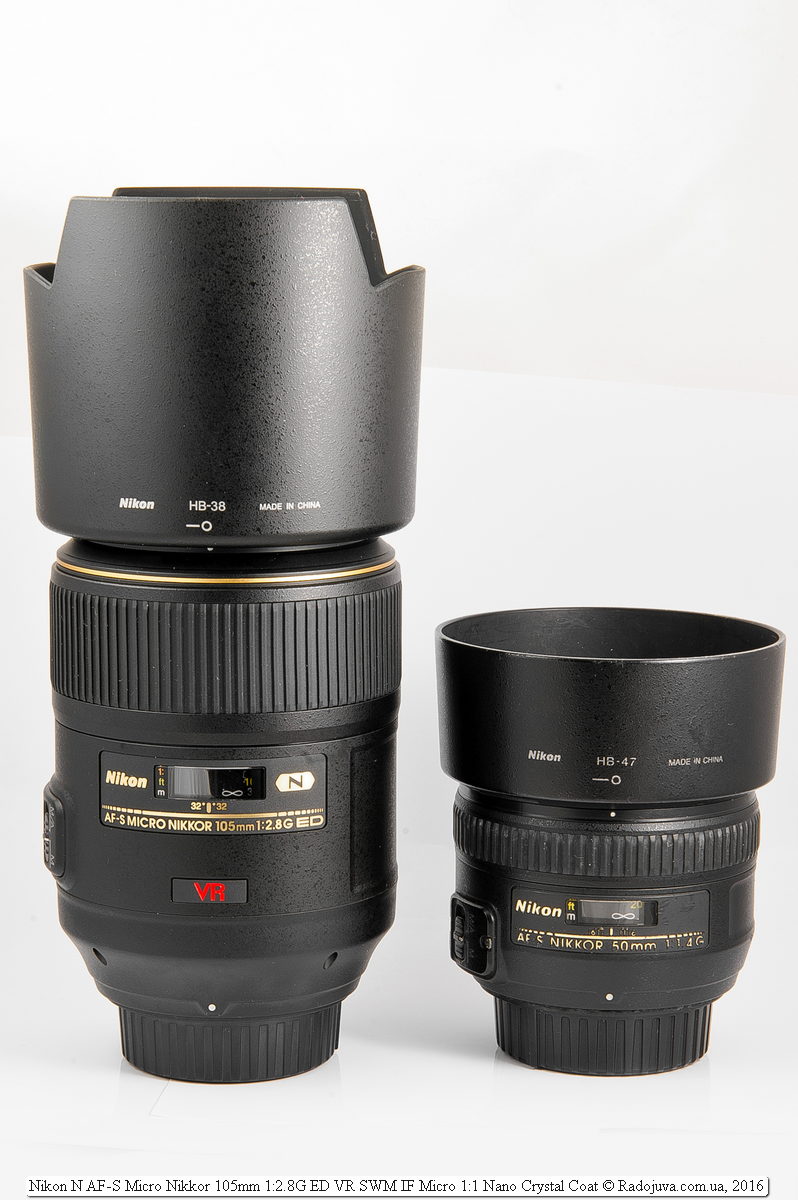
Sizes of "hundred" Nikon 105mm f / 2.8 VR Micro and "fifty dollars" Nikon AF-S Nikkor 50mm 1: 1.4G SWM
My experience
Nikon 105mm f / 2.8 VR is a very good lens. The first impression - 'what a whopper it is, and even so heavy'. The Nikon 105mm f / 2.8 VR is one of the best lenses I've ever shot and I've tried quite a few of them.
For me, it turned out to use 105mm f / 2.8 VR for macro photography is much more convenient than Nikon N AF-S Micro Nikkor 60mm 1: 2.8G SWM ED IF Aspherical Nano Crystal Coat.
It is often believed that the Nikon 105mm f / 2.8 VR can be used as a good portrait lens. For a portrait, of course, it is suitable, but it is much better for this business to use a specialized portrait lens. Nikon AF DC-Nikkor 105mm 1: 2 D Defocus Image Control with the same focal length. I am a big fan of shooting people, especially portraits, with macro lenses, but this time I did not have enough time and health to properly drive the Nikon 105mm f / 2.8 VR in public. Why macro lenses are not particularly suitable for portraiture, you can read here or see here. Write your impressions of this lens as a portrait portrait in the comments. My recommendations for choosing a portrait lens can be found here.
In general, macro photography is a very complex matter. Even with a super-cool lens like this Nikon 105mm f / 2.8 VR, it's sometimes hard to get a good shot. Many users often rely on the idea of macro photography, but as it comes down to it, there are a lot of disappointments due to a series of difficulties. First of all, difficulties are associated with a small depth of field and a constant lack of light when shooting with a closed aperture, the stabilizer in this lens will not change things.
Those who do not want to overpay for a stabilizer, 'N' -coating, built-in focusing motor and other innovations can easily get by with not so expensive, but super-quality Tokina Macro 100 F2.8 D AT-X PRO N / AIS or Nikon AF Micro Nikkor 105mm 1: 2.8D.
Prices
You can see the real prices of the lens in popular online stores, as well as buy a lens here, or in the price block below.
All autofocus MICRO / MC NIKKOR lenses
Z-mount FX:
F-mount FX:
- Nikon AF Micro Nikkor 50 mm 1:2.8 R-UW
- Nikon AF Micro Nikkor 55 mm 1:2.8
- Nikon AF Micro Nikkor 60 mm 1:2.8
- Nikon AF Micro Nikkor 60 mm 1: 2.8D
- Nikon N AF-S Micro Nikkor 60 mm 1: 2.8G SWM ED IF Aspherical Nano Crystal Coat (Japan or Thailand)
- Nikon AF Micro Nikkor 105 mm 1:2.8
- Nikon AF Micro Nikkor 105 mm 1: 2.8D
- Nikon N AF-S Micro Nikkor 105 mm 1: 2.8G ED VR SWM IF Micro 1: 1 Nano Crystal Coat (Japan or China)
- Nikon ED AF Micro Nikkor 200 mm 1: 4D
- Nikon AF Micro Nikkor 70-180 mm 1: 4.5-5.6D ED
F-mount DX:
- Nikon DX AF-S Micro Nikkor 40 mm 1: 2.8G SWM
- Nikon DX AF-S Micro Nikkor 85 mm 1: 3.5G ED VR SWM IF Micro 1: 1
Comments on this post do not require registration. Anyone can leave a comment. Many different photographic equipment can be found on AliExpress.
Results
The Nikon 105mm f / 2.8 VR Micro is a great professional macro lens. I consider it the best-in-class Nikon lens with this focal length.
Material prepared Arkady Shapoval. Training/Consultations | Youtube | Facebook | Instagram | Twitter | Telegram

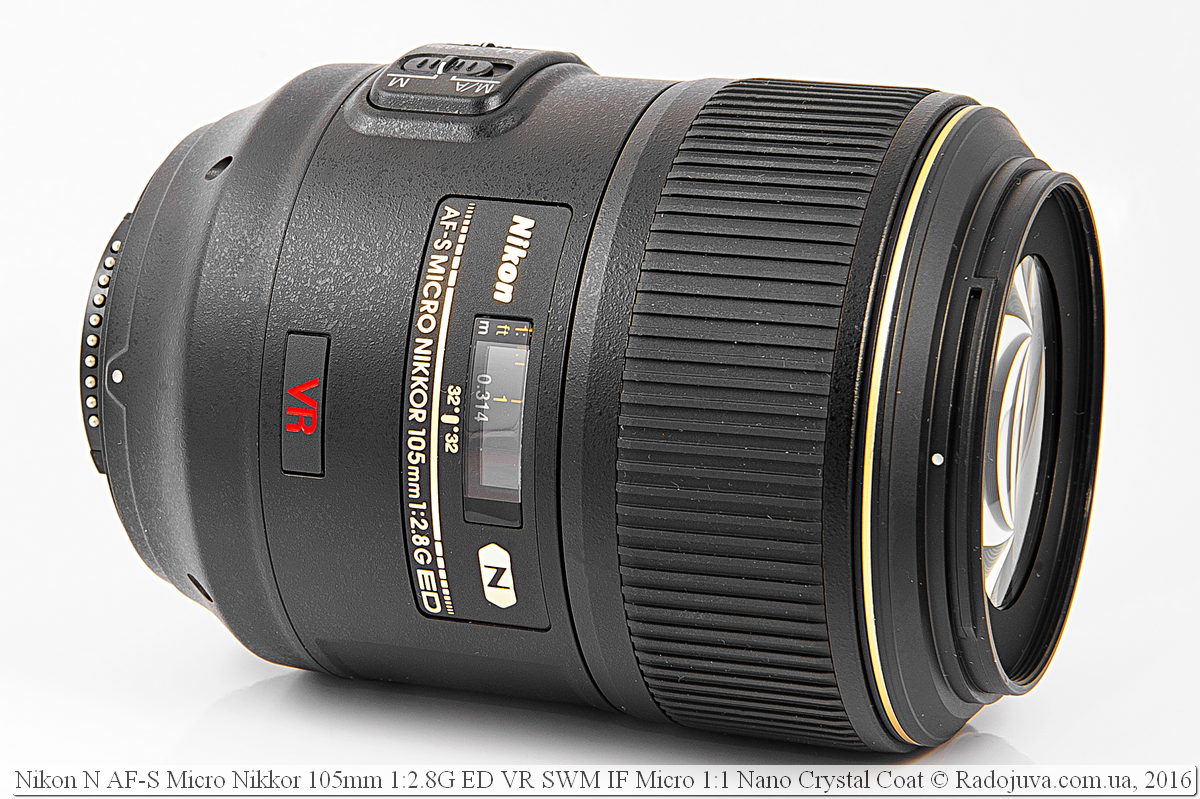
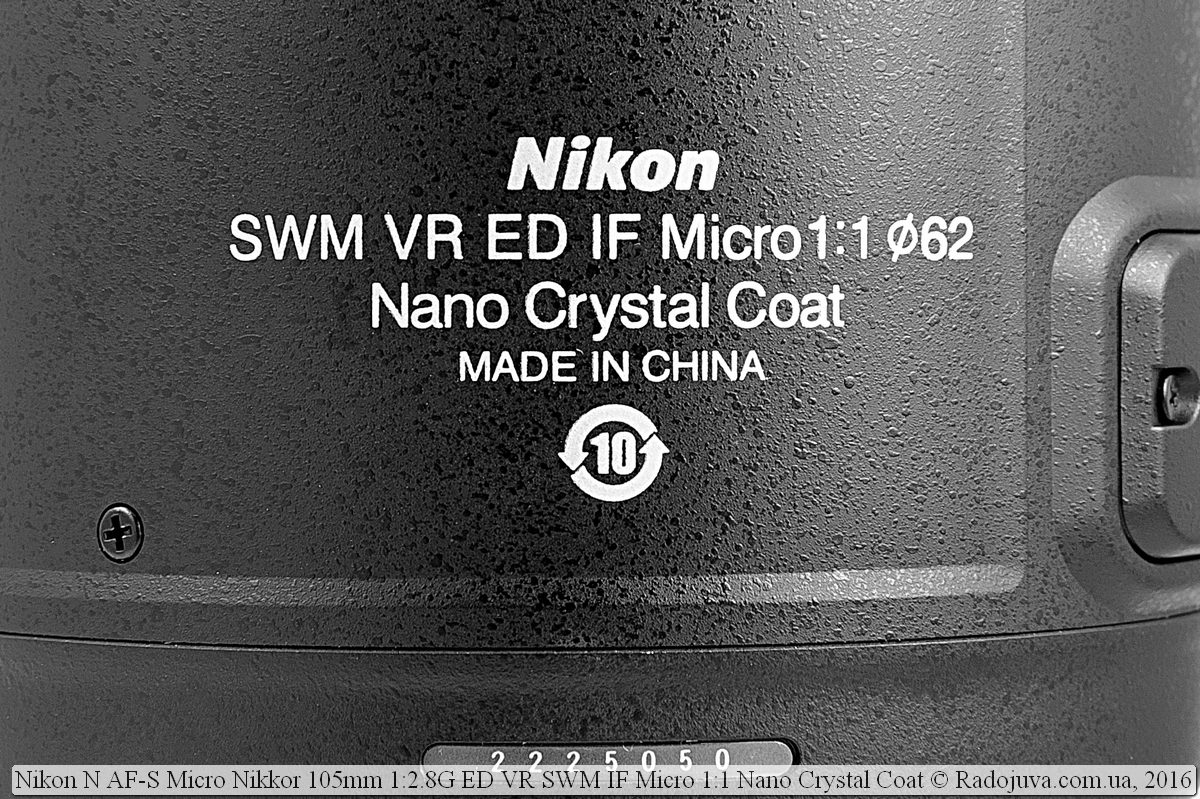
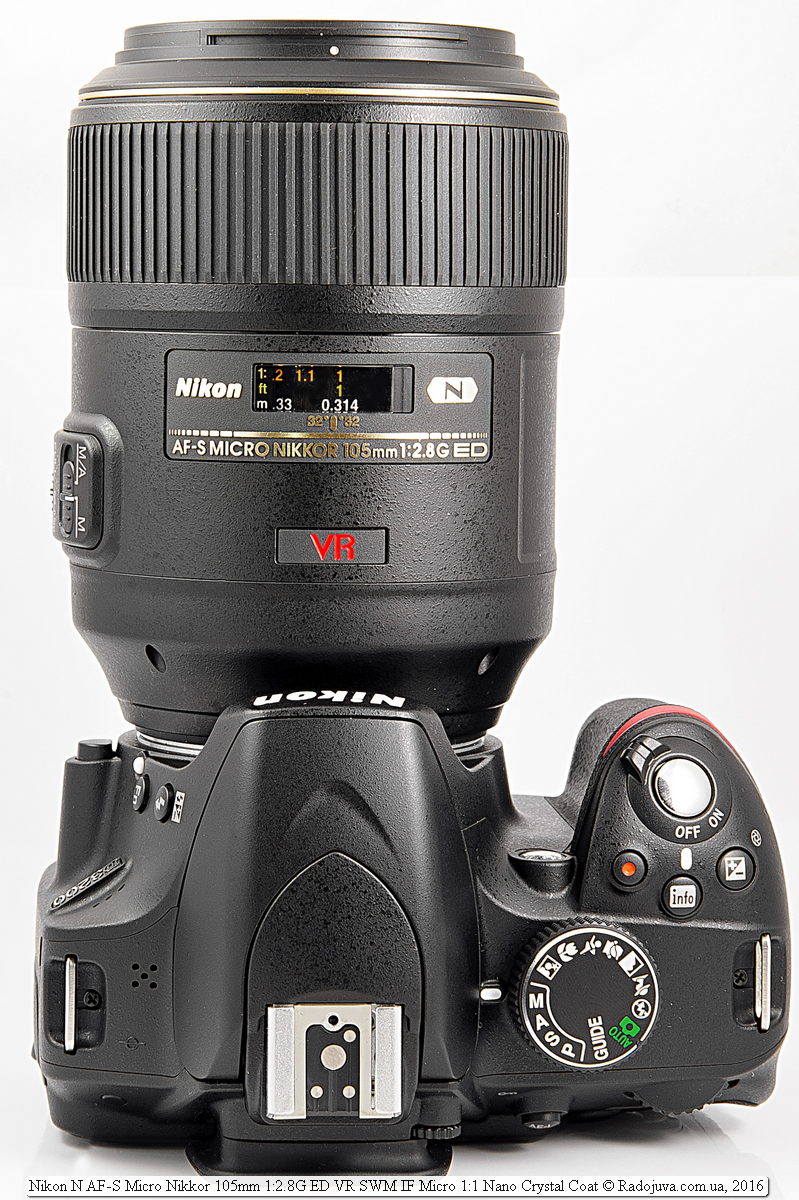
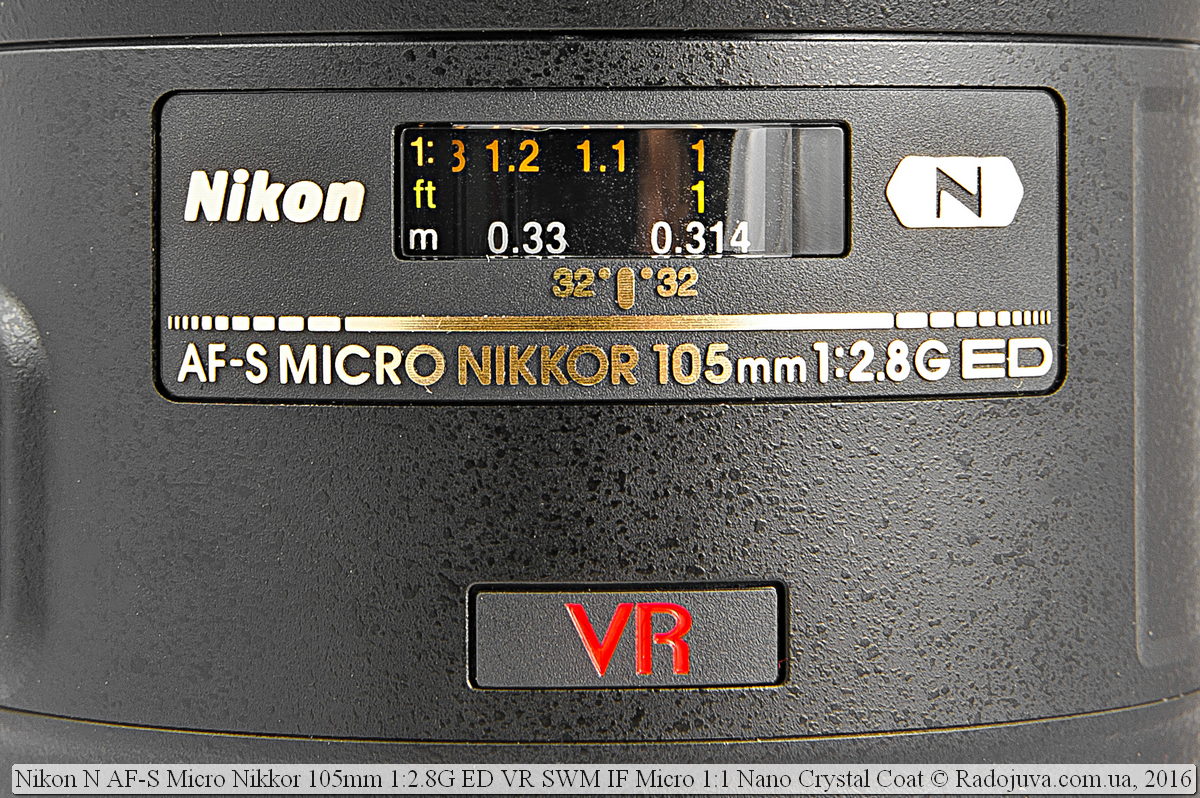
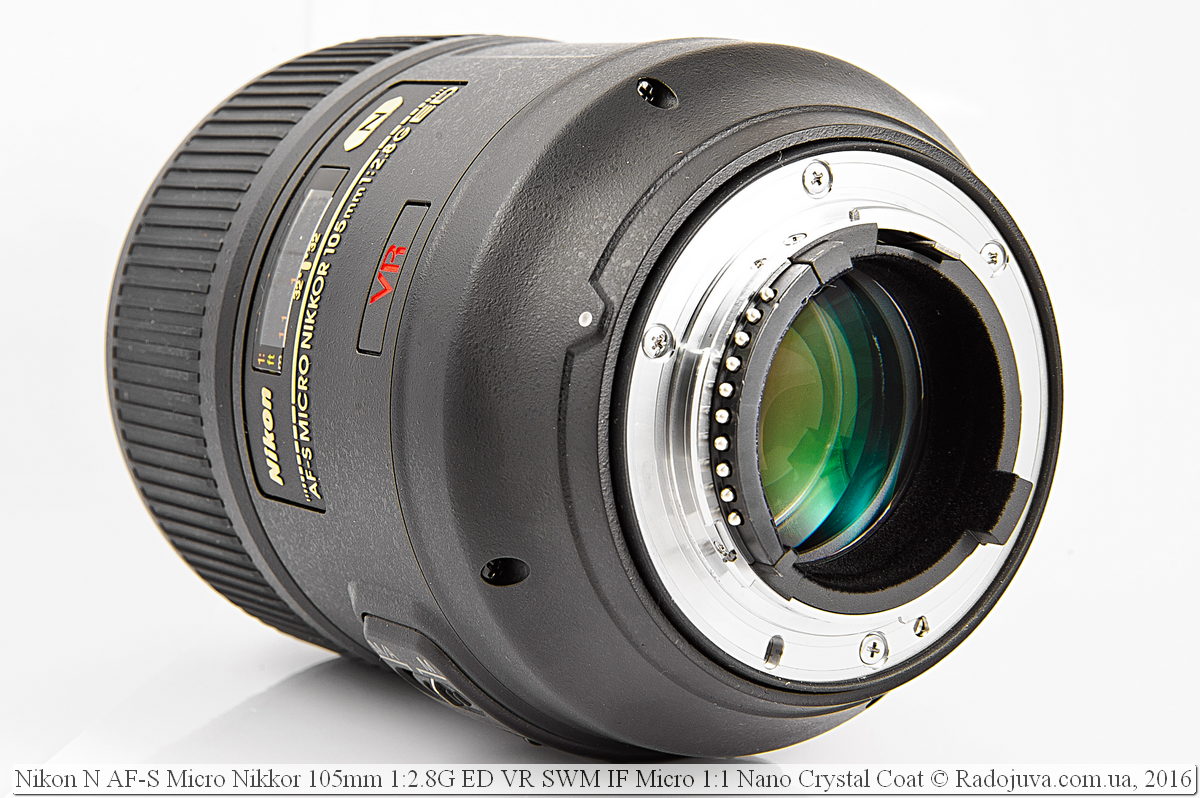

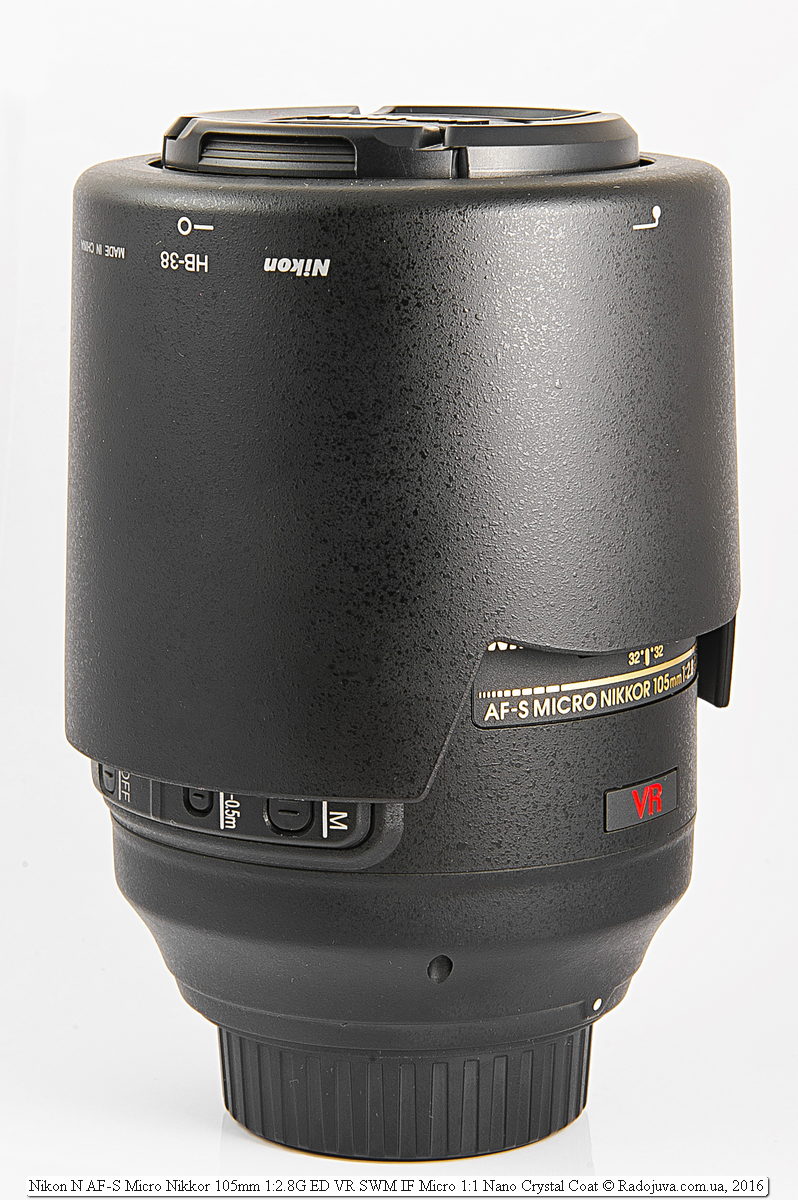
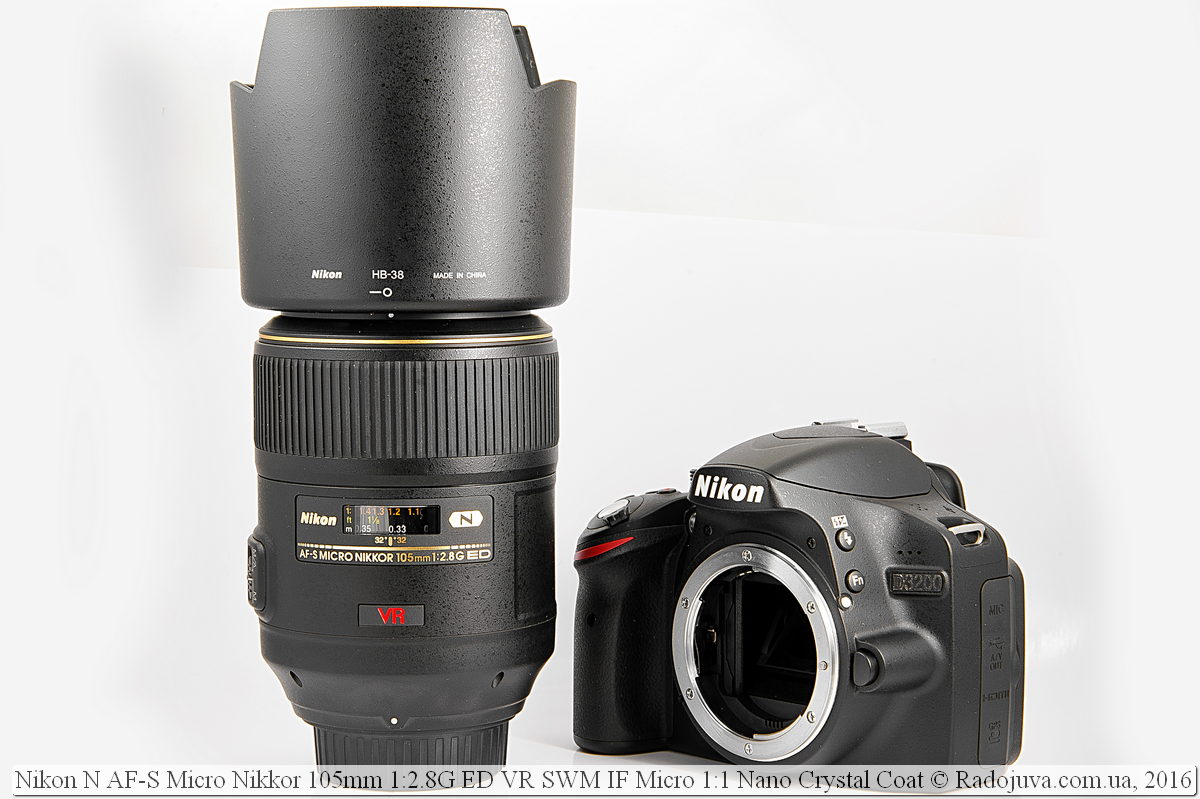
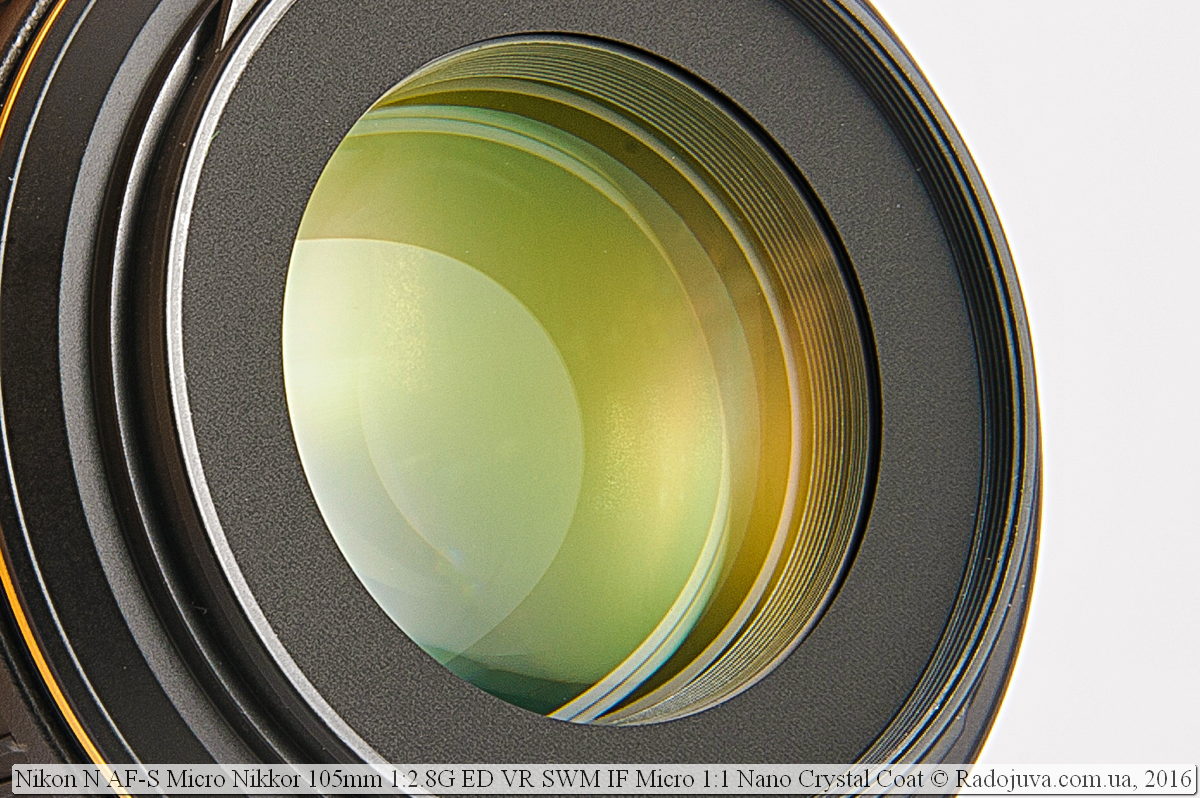






























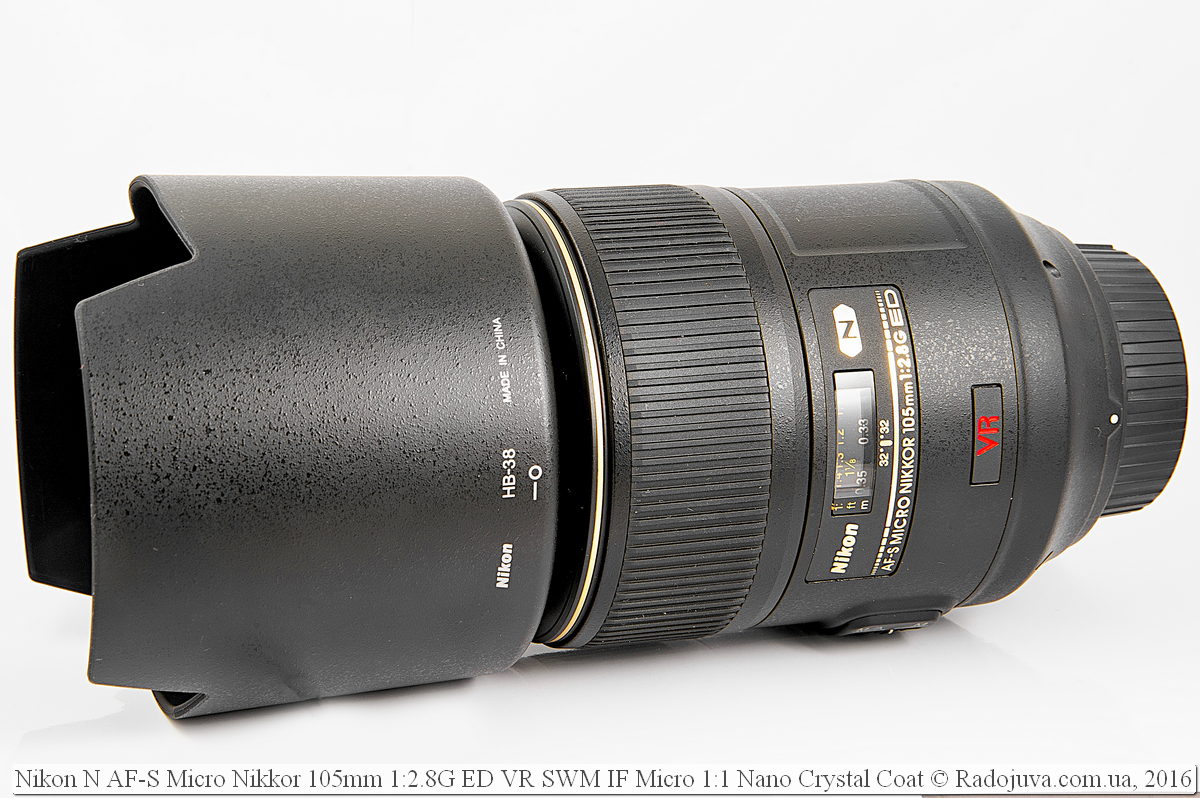

nice glass, but I didn’t see portraits on it.
Thanks for the review. Everything is understandably available. For a long time I searched and saved money for a portrait lens and bought a Nikon AF DC-Nikkor 105mm 1: 2 D Defocus Image Control. Each lens is sharpened for specific tasks. Thanks for the great review. All great shots!
and where does the portrait? =)
Speech about Makrik for the full frame. Awesome thing and darling!
dust / moisture protection, weighs a ton, but the quality ... diaragma 2.8 again, even though you can shoot a macro portrait.
liked how it is described - https://buynbest.ru/luchshij-makroobektiv-nikon/#alter2
I use it for almost 4 years. My favorite lens, never failed anywhere. If I want to show off, I put 70-210 f4 or Helios 81, less often 200mm f4, and if you need a stable result, then only 105ku. From experience I can say that at 3200 and 5100 it does not behave very well, that is, the photos are excellent but inferior in comparison with other cameras. For example, on 3200 RAW there are only 12-bit and a matrix with a low-pass filter, hence the detail is inferior to cameras like 7100 and 5300 and RAW lasts a little worse, 5100 has the same story with a filter, plus less crop, although the colors are very good. From full-frame, the experience is only with 610 and everything is fine here.
I constantly work with 7100, they are how they were created for each other, a filterless matrix, rubber RO, in general, an ideal.
Maybe I misunderstood, but the phrase “Please note that the Nikon 105mm f / 2.8 VR Micro can only use f / 2.8 during focusing at infinity, as soon as the focusing distance decreases, the aperture increases.” It seems to me a little inaccurate, in principle a trifle, and of course I find fault, but for the sake of accuracy, I must say that the endlessness of this lens comes after 3 meters, and the aperture 2.8 keeps up to 2 meters and only starts to change closer to f3 and gradually, as already true seen reaching 4.8 on MDF.
Thanks for the review, it was nice to read.
Please tell me, do you have the 105th Japan or China?
China
how much is the price
such a great pig ... thanks for the review!
Chinese pig….
I can’t resist and drop a few lines about this lens, because I have a great experience of using it - 5 or 6 years and tens of thousands of frames. The author of the review wrote everything about the positive aspects, I confirm everything. I want to talk about the features. VR helps a lot, without it it's just nicknames. I read a lot about the fact that “true macro shooters” shoot only with manual focusing, and they don't need VR either - there is a tripod! But I, it seems, have also become an experienced mackerel, but I cannot agree with these legends. I rarely use a tripod, but VR is always on. I cannot agree with the opinion of the author - "At short focusing distances, the tenacity and focusing accuracy are much worse, but this is not a big problem for those who are seriously involved in macro photography." I shoot handheld and just at the smallest distances, but I have not encountered such a problem. Focuses very accurately. The lens has one minus - small depth of field, I confirm this. In macro, this is usually very bad. You have to adapt and use this wonderful lens for its other advantages. If you have any questions - ask! The attached technical photo shows the head of a podalirian caterpillar.
And what is the working aperture in your case? I always shoot macro or 9 or 11. Stub is great, but for macro, it is useless. I shoot only with short exposures, 1/500 ... 1/2000. There are many examples of such shooting on my page.
http://vk.com/dmitriy_zubkov
I went to your page and saw nothing of the "macro". ????
I photograph macro and portraits sometimes (which, incidentally, turn out great) on 105 2.8D. I’m photographing both with hand and tripod, but more with hand. The lens is gorgeous, but as I lack a stub in it when shooting macro from hand. You have to duplicate frames to choose a sharper one.
And the depth of field in any case will be small, especially if you shoot 1: 1. These are the nuances of macro shooting.
This is for you, Ainalayin, your hands are shaking. :
)))
You will be 63 (if any) and you will be shaking. There is nothing funny about this. When shooting handheld, only the multi-frame mode saves me. For the curious, I don’t drink or smoke, even. Not because of illness (I forgot when I went to the doctors) - this is a principle.
You eat too much meat and white bread. They thicken the blood and give increased blood pressure, which has the effect of micromovements of the limbs of the hands. It is best to shoot or press the shutter button after exhalation for 3 ... 5 seconds. When the whole body is calm. Proper nutrition and basic physical fitness will help you stabilize your blood pressure. If you shoot through the screen, the best shots will be with those who have shorter arms, it's like shooting with a pistol. Tall ones with long arms rarely even hit the target itself, sometimes not a single hole. To help everyone on proper nutrition, so that their hands do not shake and live for a long time - books by Arnold Eret. Available on rutracker and butterfly.
I have my favorite lens in my collection. I mainly use it for subject photography. I can only recommend - no complaints. I use with 5200 and 800e
In my opinion, the metal body is a minus, not a plus. Cons - weight, in winter it gets very cold and then condensation in the bag on the lenses and in the carcass.
Has at least one lens broken due to a plastic case? Is there a photo of at least one lens with a bursting case? If the blow is so strong that the plastic bursts, then the lenses fly out in the metal lens. Now they use composite or specialized mixtures, which are not inferior to metal in strength.
In memory of Canon 50 1.8 and 17-85. Here they often break down, at half-ages it’s a direct disease. Plastic is different, in some lenses it is better than metal, and in some it’s very lousy :)
Filmed at minus 20, and if the temperature regime of cooling / heating is set correctly, there will be no condensation
I agree. Metal is good, but the metal should be either covered or plastic is better. By the way, it doesn't interfere with my optics in any way. But the optics, which, together with the camera, stubbornly pulls to the ground ... call me, aunt ... I would like (ideally) a DSLR + telephoto camera 200-300 mm = well, a maximum of 900 grams, and with a makrik and generally up to 600 g.
Excellent overview. I have been dreaming of a makrushnik for a long time, but I still can't get any for permanent residence. More often I shoot with rings or sprinkle the image from other glasses. And the most considered options are this Nikon and Canon's macro frame. I just can't choose which one is better. So it is clear that both are good, but I haven’t used either one yet and I cannot make a choice properly. I would like to hear the opinion of people who filmed for both. Arkady mentioned the macro frame, but I would like to hear about the nuances and personal impressions - which is better.
Go to the Macroclub website http://macroclub.ru/main and there you will see everything that interests you in all macro lenses in real pictures. God grant you not to suffer for a long time with a choice. :))
Thank you) Yeah, the problem of choice is always more acute than others.
The beast lens, no doubt, BUT the question is how it behaves when shooting portraits. Because the autofocus on my d40 from all the long-focus Nikons will be current on it. Hence the question of how acceptable it is for portraits or there is no choice and still have to change the carcass and buy something specialized.
This nikon should be just right. Really did not get to shooting people for a number of reasons. I know for sure that Tamron 90 / 2.8 for the portrait just right, as well as sigma 85 1.4, and they are motorized
Thank you for your reply!
BRIGHT! tell me pliz (you already have this glass) how it leads with portraits, and if it's not difficult to post a couple of photos with this glass! Thanks!
Yes, he behaves well in everything, and in portraits he is a saber, but what do you want, a fast-moving fix with an ocher sharpness. With examples, not really, I'm not a portrait painter, but a makrushnik.
On the crop from two meters, i.e. with aperture 2.8 you only have a shoulder-length portrait, but if you need a full-length or full-length portrait, then a few steps back and with 2.8 you get excellent phono separation.
Portraits on this lens can be viewed here: https://500px.com/photo/90245765/natalya-by-ann-nevreva?ctx_page=2&from=user&user_id=225365
Baldezh !!
We photographed the model according to the tonsils, so the photo on the links is not an indicator.
Arkady’s honestly everything’s pop, here’s the arrival in the sense of jpeg and nef.
And these are greedy portraits? The sharpness of the specialist is blunted ?! So in FIG then buy this glass at such a price? !!
I like portraits by reference, with sharpness, too, everything is fine, do not buy :)
As for the “constant lack of light” in macro photography, this problem can be easily treated with the use of a circular macro flash. I shoot in the constant circular illumination mode. The result is quite good.
So then it is, but not quite. Firstly, you do not always need to see the reflection of the bulbs, and secondly, if you use a simple circle of the type make 100, then in most cases it is not enough, very weak. What is really convenient with her is focusing, but it’s better to puff from the side or from above with a normal flash, so at least the volume is obtained and the figure is black and white.
True remark on circular flashes. Meike, Aputur give a very weak light, they are almost not suitable for a good macro. I use them for additional side illumination (my wife holds :)) And only with an external flash and reflectors.
Meike 100 is a clone of a cheap flash with ebay / ali?
I understand correctly, buying such a flash is a waste of money and is it better to buy a native one?
Well, here's how to look. I didn’t throw them away. :))) In general, it’s better to save some money. True in modern economy. The conditions are difficult.
I have money for the new Canon-480, but I read that for the macro ring is better.
on the Canon 430 of course -)
Any compatible flash with good performance characteristics (Jung, Nissin, Sigma) is suitable, a matter of money. Branded rings are very expensive, and the scope is very limited. You can use different nozzles, the same burdock, snoot. I made myself a snoot out of a juice box. I wish you success.
Here is an example.
Р Р »Рё РІРѕС‚ РµС ‰ С '.
Macro flash photo
Brrr ...
Cat's Eye
Oh! Mom!
Ring flash. Awful.
Gazprom)
By the way, the fact that he is G is both plus and minus. The plus is that it is suitable for any camera, but the minus is that you can’t use it on macromech or non-autofocus macro rings. Rather, you can, but it’s such a headache that you don’t want to get involved. I tried to somehow fix the position of the diaphragm with matches, cotton wool, pieces of paper, rubber bands, but this is not reliable and there is no way to determine even the approximate value of the diaphragm hole. So if someone wants to get an increase of 1x4 or more, they should purchase two sets of autofocus macro rings, well, and a studio flash in addition (monoblock). Naturally, such a sausage or cuttlefish will not allow shooting in the field, this scheme is only for the studio (home). But autofocus and aperture control remain.
In the field it is generally not possible for them to shoot due to the fact that it is very heavy. In the open air, I use a macro mech and a Vega 11u lens, which, in terms of lineature, is on the same level as Nikkor. In addition, we have 11 diaphragm blades versus 9 for Nikkor. And the weight is about 100 grams against 800 for nikkor.
Norm he has weight. It helps to balance hand shake when shooting in the field. But this is subjective, of course.
Dmitry, do not be so categorical, the weight interferes with someone whose hands are weak. And the stabilizer and autofocus are generally the most plein air features and it is they who make the work in the field more pleasant and more productive.
..
...
.
excellent yarkiy!
Thank you Bright!
Of the portraits, only such I can lay out.
Or such.
Another spiders 3mm size.
little tarantula? !!!
This is a horse
Hmm…. really unimportant lens ...
I expected much better, and here, perhaps, the whale shoots better, more voluminous ...
How about backing up words with an example?
Bright. Normal photos, even very normal ones. I like these more (they are softer and better perceived visually, for my taste) than stacking from which my eyes hurt and I can’t look at them for a long time. Thanks for the examples. I myself shoot on a sigma 150 macro with the OS.
Still, there is a charm in stacking. Especially if it is on microscopic objects.
I agree. Stacking is more suitable for demonstrating the fine structure of the covers, their architecture and morphology. He is beautiful, but difficult for artistic perception. This is my personal opinion, no need to agree. :)
If it’s no secret, you cover the diaphragm? It seems like the depth of field is small? Or is it such an idea?
The diaphragm depends on the goals, on the idea and on the light. At 7100 with a small pixel, it is difficult to close the hole strongly, but if there is enough light, such as using a monoblock, then diffraction is not very noticeable even at f18, but these are extremes. And so, in nature, to f8, at home in the studio 10-13.
I'll add it myself. Can? Everything is determined by the task at hand. What do you want to receive. As far as you need and in what form the background (background). The content of the plot, the distance to the object, etc. and so on. From my not the greatest experience - aperture from 7,1 to 16. If you shoot objects with a surface that gives glare, you need to be careful with the light, you need to soften it.
Rejoice at zero distortion on this focal? ))))
Try to find any lens with a focal length higher, say, 70 mm, who would have at least some distortion ...))
They made fun ..
Nikon UV-Nikkor 105mm 1: 4.5 and now in production.
Thanks to Arkady for a wonderful and thorough review of the lens.
I shoot with such a lens on the Nikon D750, and earlier on the D600 and D90. Great device!
Regarding shooting portraits with this lens: of course I tried it in this role - it's too harsh for a portrait. What is called “dermatological sharpness” in a portrait is clearly useless ... Boke is not bad, but compared to Nikon AF-S Nikkor 85mm 1: 1.8 G it loses. In general, the tool should be used for its intended purpose ...
My favorite lens. Great glass.
True, I'm stupid, or my eyes did not notice the beauty in the eyes of a bug.
There only fear and utter hunger saw my eyes.
Where fear is beauty, friends, sheer ugliness
Able to defeat a sensitive soul.
IMHO I do not understand what is beautiful in macro photography
probably it is more suitable for scientific and technical purposes
than for art.
Such people are not accepted as astronauts ...
replies
Lemons are certainly super. But with good puff it is possible to take off no worse.
The lens is good, but not great. As for me, he went better for portraits than for macro even, it upsets just a hell of a frigging, inferior to zoom, at 105, 70-200 2.8 ll and in sharpness and aberrations, the noise of the stub strains after the stub 70-200,70-300, 24-120 / 4 and especially after 18-55 time 2. The focus ring travel in the macro range is tiny and very difficult to use for stacking. For a portrait, by my standards, he has no super-duper detail, these are all bikes, 2.8 is very weak, but this is still my favorite portrait lens, despite owning 70-200 and 85 1.4 sigma (which is better both in sharpness and aberrations). I really love the lemon bokeh of this lens. For macro, I ordered Rodenstock Apo Rodagon N 50mm f2.8, let's see if it is as good as they write about it. I dream about Schneider 90mm tilt shift, but the price is 4k $ ... ..